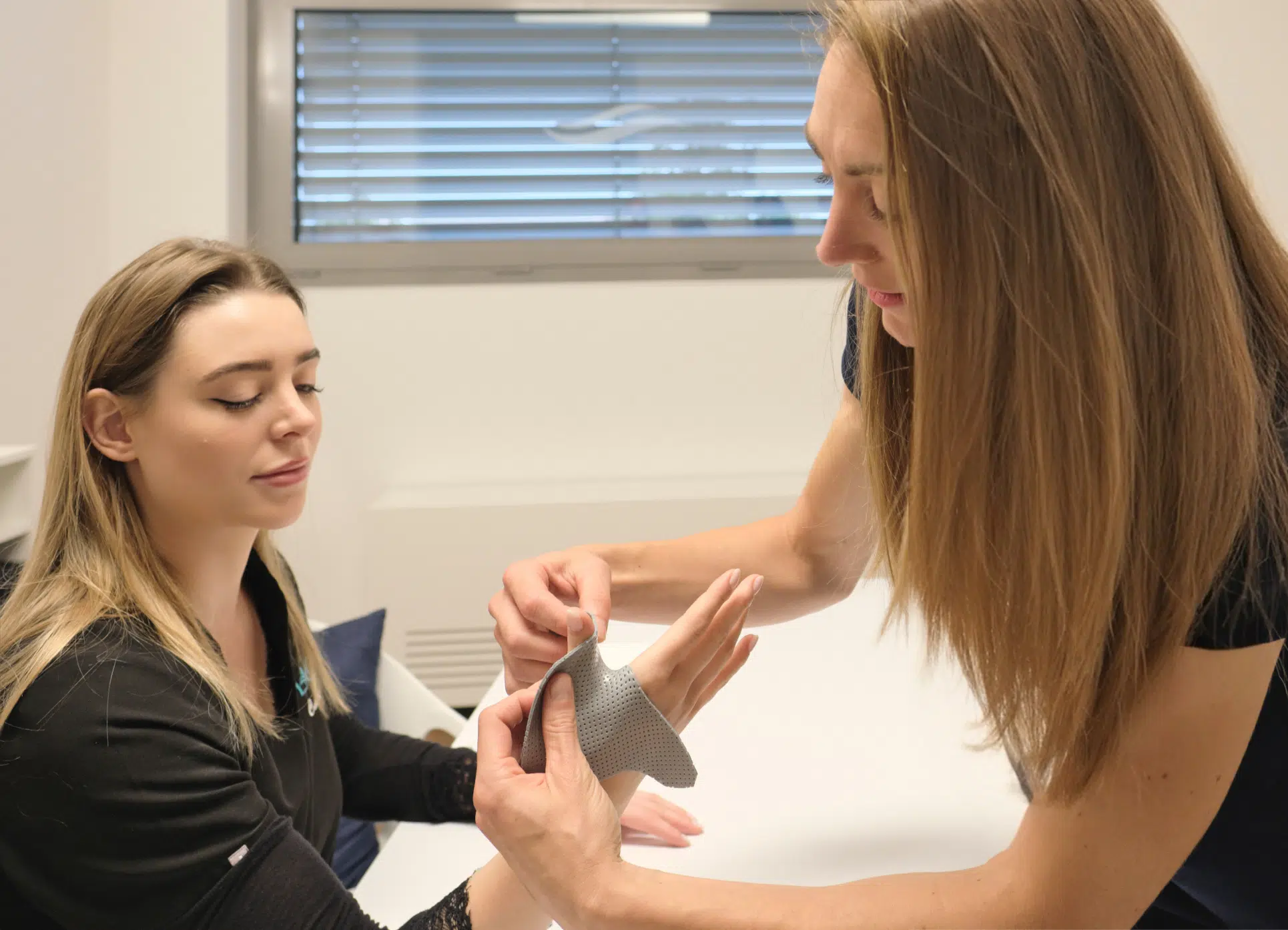Occupational therapy is a healthcare profession specializing in the functional rehabilitation of people with limitations in their daily activities due to injury or illness. It is aimed at all ages (children, adults, the elderly).
Leman hand clinic
Occupational therapy of the hand
Occupational therapy is an integral part of rehabilitation. It aims to improve patients’ quality of life by enabling them to regain functional autonomy. By focusing on the recovery of physical, cognitive and emotional capacities, occupational therapy plays a fundamental role in the recovery of people suffering from limitations due to injury or pathology. At Leman Hand Clinic, our occupational therapist will support you throughout your rehabilitation journey, with personalized approaches tailored to your specific needs.

What is occupational therapy?
Indications for occupational therapy
In the field of hand and upper limb rehabilitation, occupational therapy plays a crucial role in helping individuals to maintain or recover their functionality, enabling them to achieve optimum levels of autonomy and independence in their daily lives.
Occupational therapy is particularly recommended for hand and upper limb rehabilitation. It is used after surgery, or as the main treatment for a variety of conditions.
Patients with wrist fractures, sprains or dislocations of the upper limb benefit greatly from this therapy. Occupational therapy is also indicated for chronic pathologies such as osteoarthritis, arthritis, or nerve disorders such as carpal tunnel syndrome and neuropathy. Tendon diseases, such as De Quervain’s tendonitis or epicondylitis, as well as specific disorders such as club finger or Dupuytren’s disease, often require follow-up occupational therapy to restore functionality and prevent loss of autonomy. Thanks to tailor-made care, occupational therapy can optimize recovery and help you maintain your daily activities.
Occupational therapy methods
Occupational therapists use a variety of methods and approaches to achieve rehabilitation goals, tailored to the specific needs and wishes of each patient. These may include :
- Mobilization exercises
- Muscle strengthening techniques
- Massage
- Coordination and dexterity activities
- Pain and inflammation management strategies
In addition to traditional approaches, occupational therapists also use technology to facilitate rehabilitation. This may include the use of custom-made splints, functional electrical stimulation equipment, or taping.
When should you consult an occupational therapist?
As soon as possible after surgery, or as exclusive treatment following :
- Accidents : fractures, sprains, dislocations, amputations… (hand, wrist, elbow)
- Diseases : articular (osteoarthritis, arthritis), nervous (carpal tunnel, neuropathy), tendinous (De Quervain tendonitis, epicondylitis), jerky finger, Dupuytren’s disease, CRPS (Complex regional pain syndrome)…
Hand and wrist rehabilitation
Hand and wrist rehabilitation
Rehabilitation of the hand and upper limb aims to restore the individual’s motor, sensory and functional capacities, enabling him or her to regain optimal participation in daily activities.
Education and autonomy
In addition to rehabilitation itself, occupational therapy also focuses on therapeutic education and patient empowerment, teaching coping techniques, ergonomic strategies and self-education exercises to promote recovery.
Surgeon and occupational therapist : interdisciplinary collaboration
Rehabilitation of the hand and upper limb requires close collaboration between the surgeon, occupational therapist and patient. This collaboration can be extended to include other healthcare professionals (physiotherapist, neurologist, orthopedic surgeon) to ensure comprehensive, personalized patient care.
Occupational therapy coverage
Occupational therapy services are covered by basic health insurance (LAMal), accident insurance (LAA), disability insurance (AI) or supplementary or international insurance schemes.